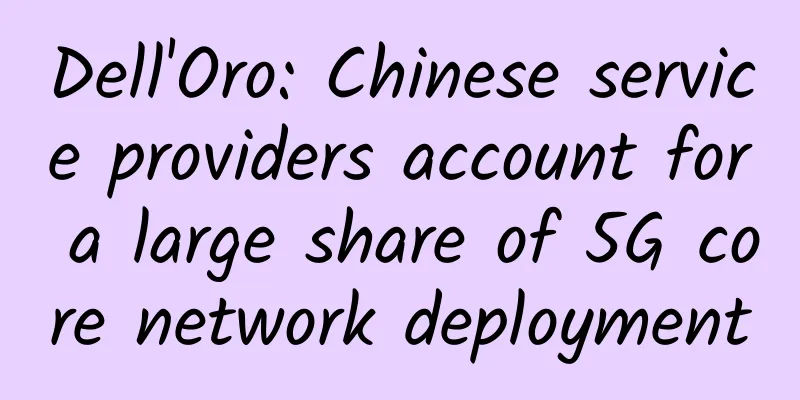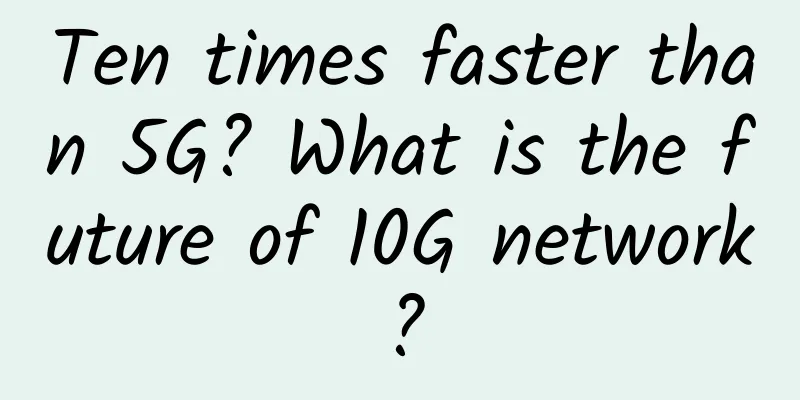Enterprise 5G: A guide to planning, architecture and benefits

|
Enterprise 5G deployments require extensive planning. Prepare for advances in wireless technology with this 5G guide that covers use cases, architecture integration, and more. 5G is the latest generation of cellular technology that promises faster speeds, lower latency and greater capacity for a wide range of devices compared to 4G. While carriers are spending most of their 5G marketing dollars to attract consumers, businesses will reap the bigger rewards. In the coming years, enterprise use cases will outpace consumer use cases, making it imperative that organizations thoroughly understand the benefits and challenges of 5G and begin evaluating how the technology may impact the way they do business. This enterprise guide to 5G will explain how cellular technology works, its architectural options, emerging use cases, comparisons to 4G and Wi-Fi 6, and more. What is 5G?5G is the fifth generation of cellular technology, supporting gigabit data rates that could exceed traditional wired network speeds. While 5G's potential 20 Gbps speeds are very attractive, its low latency (ultimately 5 milliseconds or less) is even more attractive for enterprise applications that will include augmented reality, IoT, location awareness, and branch office connectivity. 5G is designed to be more secure than its predecessor cellular services, thanks to its more comprehensive transport security algorithms and safeguards such as network slicing. How does 5G work?5G uses a vast network of small cell towers located on light poles and building rooftops to transmit signals over millimeter wave spectrum (30 GHz to 300 GHz). Due to their short wavelengths, millimeter waves can only travel short distances and are easily affected by weather and obstructions, such as buildings, walls, coated windows, and foliage. Millimeter wave technology works best in densely populated areas or open places, such as factories or stadiums. These places can be covered with low-power small base stations to properly gain line of sight and enhance radio signals. In addition to small base stations, 5G networks can also be connected and distributed through macro base stations and home base stations. Areas with lower population density can also take advantage of 5G, but must use lower frequency bands, such as low-band and mid-band, to support fewer devices, lower speeds, and greater latency. Currently, many organizations are focusing their enterprise 5G efforts in dense areas or open venues to take full advantage of 5G's capabilities. The Third Generation Partnership Project (3GPP) is developing 5G standards, such as 5G New Radio (5G NR), the successor to the Long Term Evolution (LTE) standard, so companies need to pay close attention to its work. 5G NR supports the growth of wireless communications by improving the spectral efficiency of electromagnetic radiation. This new generation of cellular technology has its own jargon, so it's time to brush up on the 5G terms you need to know. The difference between 5G and 4GWhile 4G cellular service played an important role in powering a mobile workforce, 5G is likely to be better known for improving enterprise operations and enabling the delivery of new applications and services. 4G LTE is limited by its spectrum, which only goes up to 6 GHz. 5G's millimeter wave operates between 30 GHz and 300 GHz, which means wider channels can carry more data. The lower frequency bands used by 4G hinder latency, speed, and capacity, even though its signals can travel farther between radios or tall cell towers. Some 5G networks can support 10 to 100 times more users and devices per square kilometer than 4G networks. 5G will require organizations to invest in new core infrastructure, including base stations and antennas, as well as onboard radios for devices and sensors. 5G's shorter transmission distances also require more infrastructure, namely more small base stations, to transmit signals from one point to another without interference. 5G brings a whole new set of capabilities; among them is network slicing, a technology that lets enterprises program network segments to share 5G connections securely and cost-effectively. Business benefits of 5G in the enterpriseOrganizations have long wanted to provide enterprises with flexible, secure connectivity options, and 5G's capabilities meet this need. As TechTarget contributor John Fruehe writes, 5G will benefit enterprises in five key ways: Automation. Faster speeds and lower latency make cellular technology a viable option for bringing automation to branch offices. A flexible alternative to dedicated links. 5G services offer a lower-cost, more flexible alternative to MPLS and other dedicated lines used primarily for latency-sensitive applications. More users and devices. Due to increased capacity, 5G supports connecting more users and devices in the same physical area without compromising availability. Power savings. 5G can reduce device power consumption by up to 90%, making 5G a compelling IoT use case as some IoT devices can have long-range battery lives of up to 10 years. Enhanced security. Additional security features, including key management services, make 5G a more trusted choice than 4G for IoT, branch office, and other enterprise traffic. Enterprises are also watching the development of a new version of 5G, called standalone 5G, or SA 5G, which promises to further reduce latency than 5G networks that rely on a 4G core. SA 5G networks rely on a 5G radio and a 5G core at their foundation, providing an additional high-speed, low-latency option for enterprises. Vendors, manufacturers and the U.S. government overall are working to make 5G a secure technology, which should ease many of the concerns companies have about vulnerabilities. For example, 5G encryption has been bumped up to 256 bits from the 128-bit encryption standard used in 4G. Network slicing lets businesses apply customized security controls within specific applications and services to ensure only authenticated users have access, and because 5G is programmable, it can more easily integrate new technologies, such as zero trust, to provide further assurance. 5G architecture and featuresThe 5G architecture supports machine-to-machine communications better than its predecessors because of its ability to transmit large data streams, enabling real-time decision making and facilitating automation. 5G’s programmability makes it easier to connect to more data sources, including resources stored in the cloud. Finally, 5G is backward compatible with other wireless technologies, including 3G, 4G, and Wi-Fi, enabling enterprises to aggregate the standard with other communication systems. Dedicated 5G network architecture5G networks can be either public or private. Many large enterprises are evaluating private 5G networks as an alternative to using network slicing to better protect their operations. While private networks cost more, they enable enterprises to tailor their 5G buildout to meet application needs, manage infrastructure more granularly, and protect local data. 5G and Wi-Fi 6The intersection of 5G and Wi-Fi 6 (802.11ax) presents some interesting options for enterprises. For example, Wi-Fi 6 may be better suited for crowded spaces with obstructions and few sight lines, while 5G performs well in open spaces that require high speeds and low latency. Seamless handoffs between Wi-Fi and 5G networks mean that the two technologies can be used together to support a growing remote workforce. Both 5G and Wi-Fi 6 have powerful signal modulation, authentication and security features. In addition, each technology can help enterprises reduce power consumption, either by design or through power-saving features that can reduce the load on access points. Typically, a major difference between cellular and Wi-Fi technologies is how they operate in licensed and unlicensed bands, but 5G changes that. Experts warn that using 5G in unlicensed bands could cause interference with Wi-Fi, so companies should plan their coverage carefully. Additionally, Wi-Fi cannot transmit sessions between access points. This limitation comes into play if a business wants to use Wi-Fi to track the movement of products. In contrast, 5G can easily handle these transmissions. 5G, IoT, and Edge ComputingIoT and edge computing have very different needs for high speed and low latency. In many cases, sensors send mission-critical information to edge or cloud-based devices for aggregation, analysis, and action. For example, self-driving cars, assembly line equipment, and city surveillance cameras are constantly sending and receiving data. 5G's low power requirements extend battery life, making it ideal for IoT networks. This feature enables businesses to innovate in their architecture designs because devices do not have to be connected to a power source. Experts advise enterprises to choose the best wireless connectivity option based on the application requirements, understanding that 5G may be overkill in meeting application needs. 5G and SD-WANOrganizations can pair 5G and SD-WAN to manage wired and wireless connections to remote and home offices. For example, an insurance company deployed SD-WAN to proactively manage cable, DSL, fiber, and LTE links at its 10,000 sites. When 5G becomes widely available, 5G services can be easily added to the mix. SD-WAN can also be used to help sites switch between 4G and 5G connections, automatically selecting the appropriate link based on the needs of the application and traffic conditions. Some industries, including retail, can use SD-WAN to provide 5G as the primary option for pop-up locations, with secondary links provided by MPLS and broadband. Enterprise 5G Use CasesThe use cases for enterprise 5G are expanding rapidly as companies evaluate areas where cellular technology can improve their operations. Here are five examples of 5G use cases:
5G Enterprise ChallengesFor all of the benefits of 5G, enterprises should carefully consider the challenges they face in abandoning current wireless and wired infrastructure. Cybersecurity issuesThe fact that 5G can support more connected users and devices simultaneously than previous cellular technologies means more exposure vectors that need to be carefully evaluated and monitored. In addition, 5G requires more infrastructure that must be protected from threats. Experts warn that hackers could use 5G networks to exploit existing vulnerabilities or develop new attack vectors. cost5G requires significant investment to reap the full rewards. Legacy network components will have to be replaced with 5G-compatible ones. Businesses will also have to purchase new wireless equipment to ensure adequate coverage. Signal interferencePerhaps more than any other wireless technology, 5G requires network teams to pay close attention to site surveys. The simplest use case is a venue with open space under one roof. A site survey will reveal the extent of signal penetration challenges (especially coated windows, walls, etc.) and radio blind spots, and how much effort is needed to mitigate them through facility redesign or additional equipment, such as antennas. 5G availabilityBusinesses that want to take full advantage of 5G across their enterprise must first determine whether cellular technology is rolled out across all of their locations. Service providers are still rolling out their 5G services, with much of their attention focused on densely populated areas, such as major metropolitan areas. While use cases in agriculture and mining are plentiful in rural areas, deploying 5G in these areas may not be cost-effective for operators, which could delay its availability. How to find partners and buy 5G5G services are only as good as the devices and applications that use them, so organizations should develop a roadmap to determine when enterprise devices and applications will be 5G-enabled. From there, the enterprise can set a timeline for purchasing 5G services. Enterprises will have to decide whether to buy, lease or build 5G networks. With these three options, enterprises can purchase public 5G services from mobile operators, lease 5G network slices or build private 5G networks. Enterprises that want to build their own private 5G networks should work with an integrator, vendor, or service provider to help address some of the more nuanced aspects of 5G. For example, 5G can significantly increase traffic, so organizations must evaluate whether other parts of the network, such as VPNs, can handle the load. Enterprises choosing to build 5G networks should consider the following four factors:
The future of enterprise 5GEnterprise 5G is all about innovation and applications. What happens next will depend largely on how enterprises use 5G's speed, low latency, and capacity to drive artificial intelligence, machine learning, real-time analytics, and other advances deep into their operations. A new iteration of 5G is also waiting in the wings. According to a timeline published by 3GPP, the 5G Advanced standard is scheduled for release in 2024. Among other features, 5G Advanced will support extended reality communications, which builds on existing augmented reality and virtual reality applications. That said, the wireless industry is already working on 6G technology, which is expected to be commercially available by 2030 and will support data rates of 1 terabyte per second. 6G will build on the application capabilities of 5G, such as imaging, presence technology, and location awareness. 6G technology will be able to selectively use different frequencies to measure electromagnetic absorption rates and adjust the frequency accordingly. Industries such as government, healthcare, and transportation will benefit greatly from 6G. The latest 5G news and trendsSince 5G networks began rolling out three to four years ago, 5G services have generally improved compared to 4G. Faster upload and download times have been reported around the world. However, 5G networks are not meeting the International Telecommunication Union's ideal download speed of 20 Gbps, as today's best-performing networks can only reach 1 Gbps, according to speed test data from Oookla. This may be normal growing pains as more customers buy new devices that use 5G, but delays in building millimeter wave networks and difficulties in locating new cell towers have hampered the rollout of 5G. Deploying small cells on existing structures such as streetlights helps make millimeter wave networks possible. 5G is approaching maturity, and as a result, service providers and enterprises are showing greater interest in fixed wireless access. A study by Rethink Technology Research reports that consumers, governments, and mobile operators are looking to take advantage of improved fixed wireless capabilities, with the United States currently leading in terms of the number of subscribers, with countries with large populations such as China and India also increasing rapidly. |
<<: How to solve the problem of cross-border DNS resolution failure?
>>: How will 5G mainstreaming affect the Internet of Things in 2023?
Recommend
Megalayer: 618 promotion: 50% off all VPS, 20% off dedicated servers, and $10 bonus for new user registration
Megalayer is a foreign hosting company establishe...
With intelligent networking and remote working, Dandelion allows you to spend the New Year without having to work overtime!
Grabbed a ticket to go home for the Spring Festiv...
Let’s talk about what CDN is. Do you know these characteristics?
Preface When we browse the web, watch videos, and...
4 Ways to Save Money in Your Data Center
When data center downtime costs an average of nea...
Building 5G and expanding 4G: 2G/3G network withdrawal is underway around the world
[[388835]] The COVID-19 pandemic has driven deman...
Boomer.Host: Cheap VPS in Houston starting at $3.50 per year (low price and low configuration)
Boomer.Host is a relatively new foreign hosting c...
[Black Friday] RAKsmart cloud servers are 30% off, cluster servers are half price for the first month, flash sales servers start at $30/month
Domestic and foreign merchants have successively ...
OneTechCloud VPS Hosting 20% off, US CN2 GIA/Hong Kong CN2/CMI large bandwidth/high defense optional
OneTechCloud (Yikeyun) launched this year's s...
A "right remedy" for Ethernet Mac and Phy layer problems
In today's digitally connected world, Etherne...
Wi-Fi 6 no longer needs to wait and see: the "four no's" that previously hindered its popularization
Although Wi-Fi 6 wireless technology has been aro...
DediPath Halloween 50% off all VPS, 1Gbps unlimited traffic starting at $10 per year, 40% off dedicated servers
DediPath has launched a Halloween promotion, offe...
How to attract and train talents in the era of the Internet of Things
We are experiencing a worldwide war for talent wi...
What is AWG? Why is AWG an important parameter when choosing cables?
When buying cables, there is an important paramet...
[Heavyweight Tips] 5 steps to build a wireless network!
Here's some heavyweight goodies today! Let’s ...
How powerful is WiFi7? Three times faster than WiFi6, as fast as lightning
Now the latest wireless routers on the market bas...









